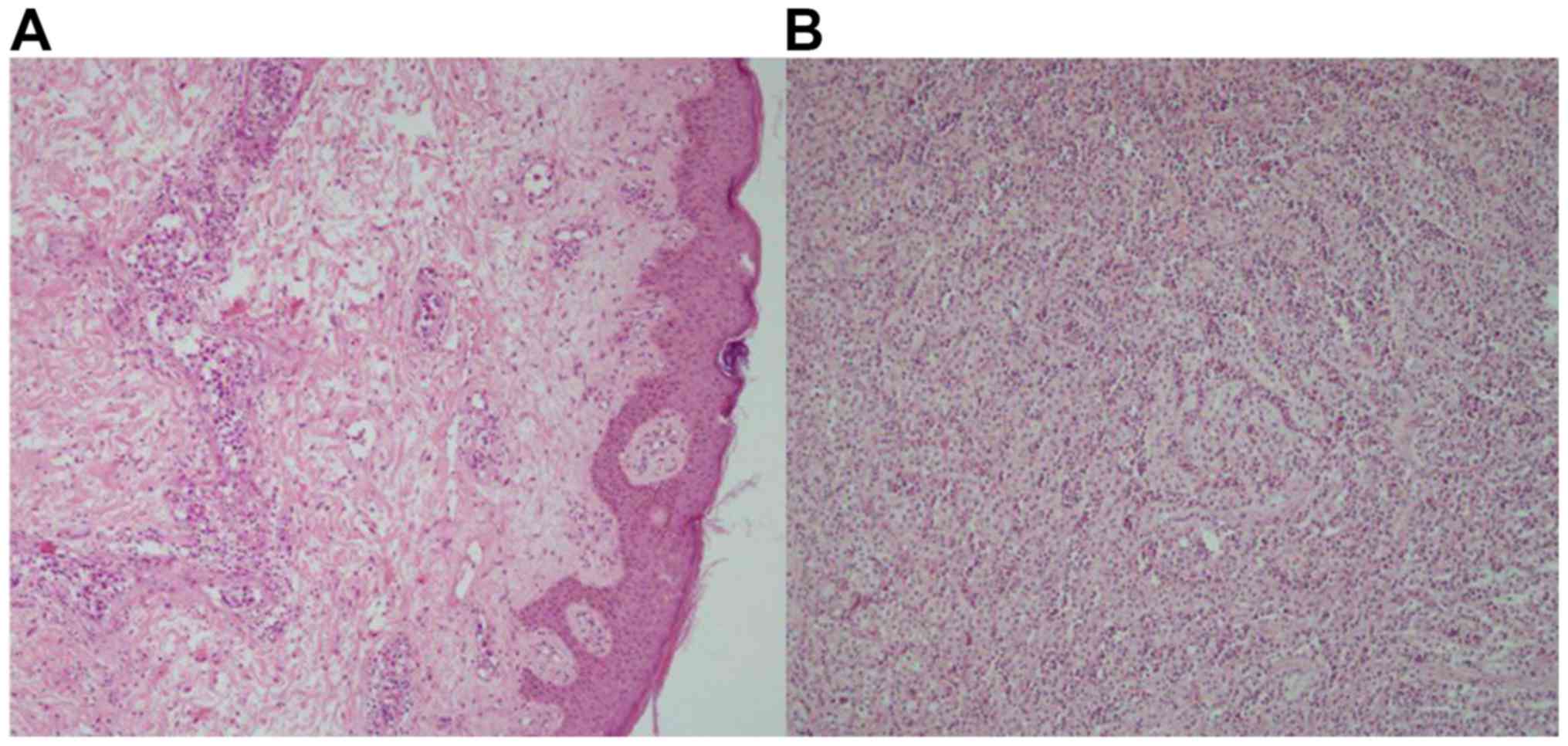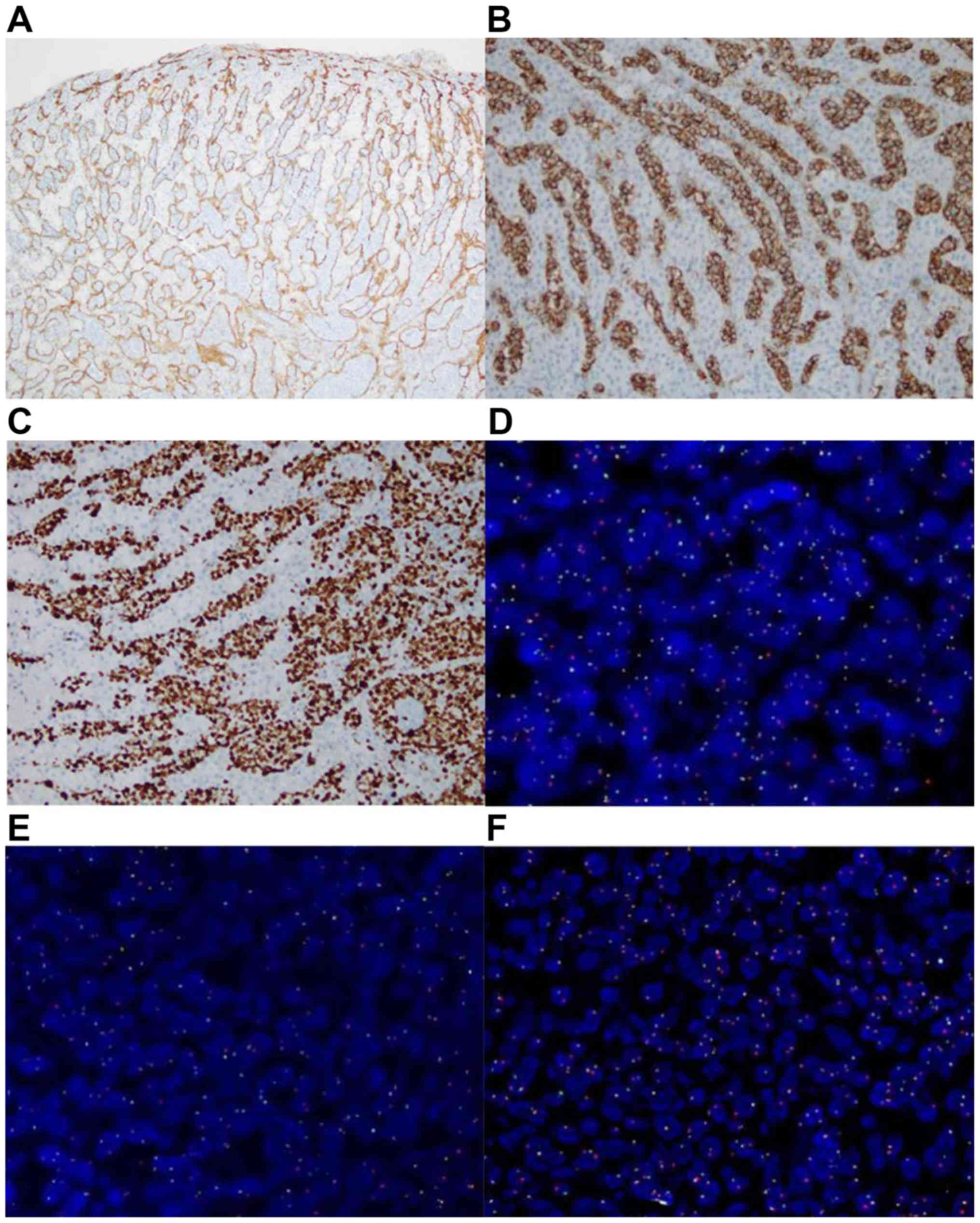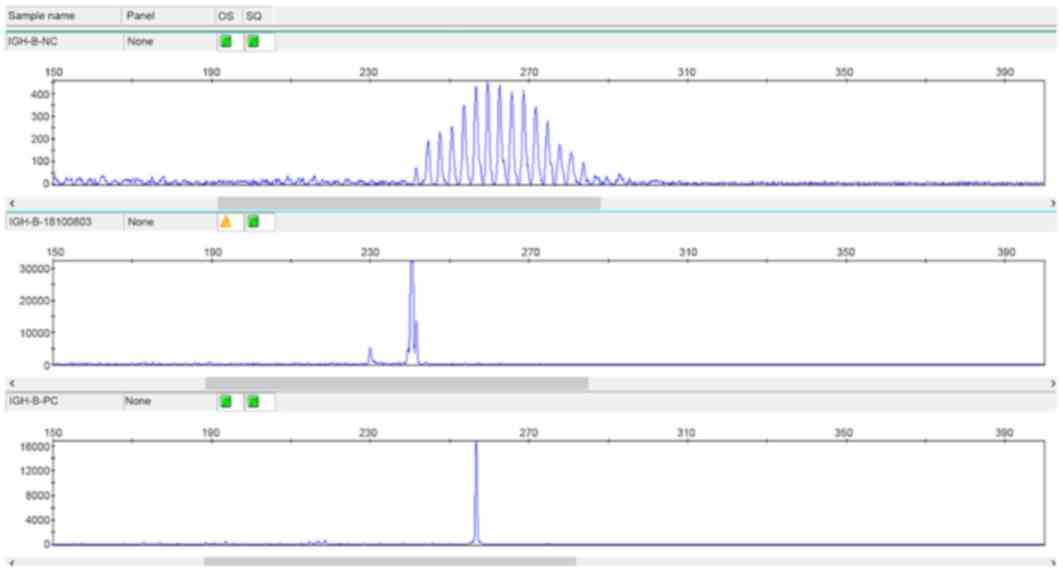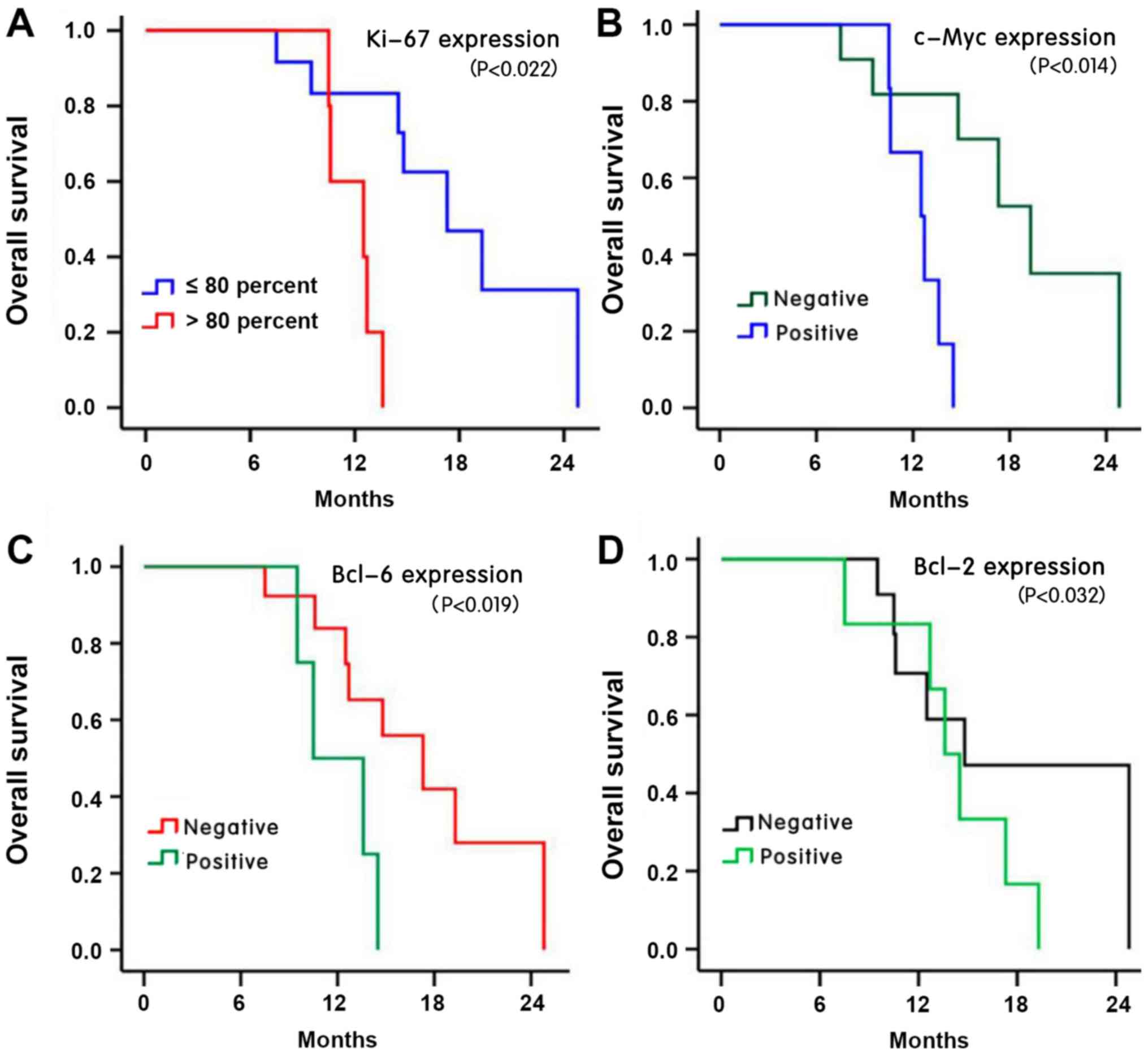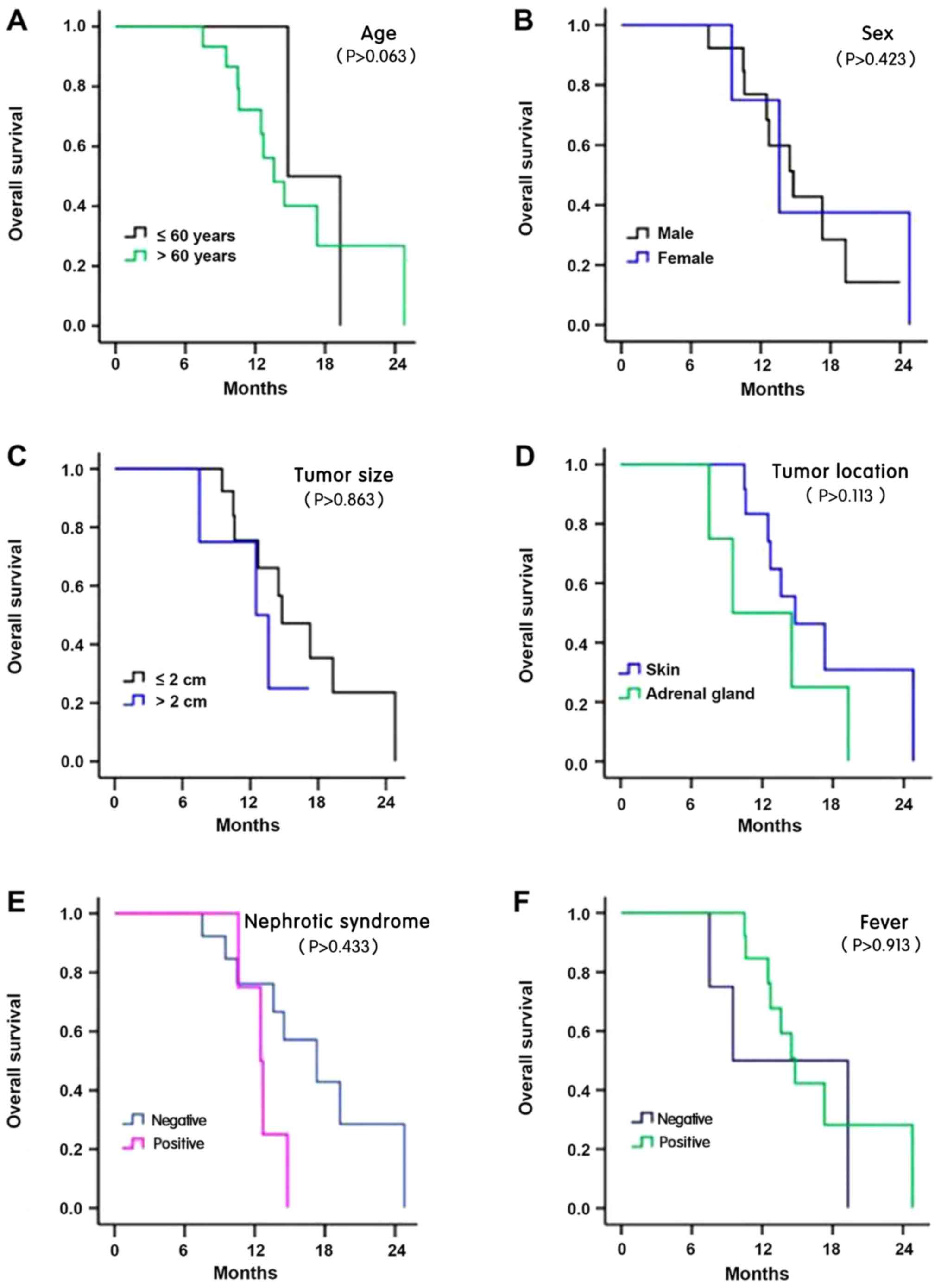|
1
|
Khojeini EV and Song JY: Intravascular
large B-cell lymphoma presenting as interstitial lung disease. Case
Rep Pathol. 2014:9280652014.PubMed/NCBI
|
|
2
|
Sabattini E, Bacci F, Sagramoso C and
Pileri SA: WHO classification of tumours of haematopoietic and
lymphoid tissues in 2008: an overview. Pathologica. 102:83–87.
2010.PubMed/NCBI
|
|
3
|
Ferreri AJ, Dognini GP, Campo E, Willemze
R, Seymour JF, Bairey O, Martelli M, De Renz AO, Doglioni C,
Montalbán C, et al: Variations in clinical presentation, frequency
of hemophagocytosis and clinical behavior of intravascular lymphoma
diagnosed in different geographical regions. Haematologica.
92:486–492. 2007. View Article : Google Scholar : PubMed/NCBI
|
|
4
|
Hope CB and Pincus LB: Primary cutaneous
B-cell lymphomas with large cell predominance - primary cutaneous
follicle center lymphoma, diffuse large B-cell lymphoma, leg type
and intravascular large B-cell lymphoma. Semin Diagn Pathol.
34:85–98. 2017. View Article : Google Scholar : PubMed/NCBI
|
|
5
|
Lazzari I, Galetti C, Corvalli G, Bernardi
R, Gianotti G, Sagramoso C and Calogero P: Intravascular large
B-cell lymphoma as a cause of terminal acute respiratory distress
syndrome: atypical presentation of a rare disease. Aging Clin Exp
Res. 30:97–99. 2018. View Article : Google Scholar : PubMed/NCBI
|
|
6
|
Murase T, Yamaguchi M, Suzuki R, Okamoto
M, Sato Y, Tamaru J, Kojima M, Miura I, Mori N, Yoshino T and
Nakamura S: Intravascular large B-cell lymphoma (IVLBCL): A
clinicopathologic study of 96 cases with special reference to the
immnophenotypic heterogeneity of CD5. Blood. 109:478–485. 2007.
View Article : Google Scholar : PubMed/NCBI
|
|
7
|
Shimada K, Kosugi H, Narimatsu H, Shimada
S, Suzuki T, Ito M, Kinoshita T, Mori N and Naoe T: Sustainde
remission after rituximab-containing chemotherapy for intravascular
large B-cell lymphoma. J Clin Exp Hematol. 48:25–28. 2008.
View Article : Google Scholar
|
|
8
|
Chen Y, Ding C, Lin Q, Yang K, Li Y and
Chen S: Primary intravascular large B-cell lymphoma of the lung: A
review and case report. J Thorace Dis. 6:E242–E245. 2014.
|
|
9
|
Liu CL, Lai N, Zhou Y, Li S, Chen R and
Zhang N: Intravascular large B-cell lymphoma confirmed by lung
biopsy. Int J Clin Exp Pathol. 7:6301–6306. 2014.PubMed/NCBI
|
|
10
|
Kohan AA, Paganini L, Biedak P, Arma JI,
Dalurzo MC and Garcia-Monaco RD: Pulmonary intravascular lymphoma
detected by FDG PET-CT: A case report. Rev Esp Med Nucl Imagen Mol.
32:318–320. 2013.PubMed/NCBI
|
|
11
|
Bhargava P, Siddiqui F, Aggarwal B, Moore
BE and Elble RJ: A unique case of intravascular lymphoma mimicking
encephalomyeloradiculo neuropathy. Neurologist. 20:18–21. 2015.
View Article : Google Scholar : PubMed/NCBI
|
|
12
|
Colavolpe C, Ebbo M, Trousse D, Khibri H,
Franques J, Chetaille B, Coso D, Ouvrier MJ, Gastaud L, Guedj E and
Schleinitz N: FDG-PET/CT is a pivotal imaging modality to diagnose
rare intravascular large B-cell lymphoma: Case report and review of
literature. Hematol Oncol. 33:99–109. 2015. View Article : Google Scholar : PubMed/NCBI
|
|
13
|
Nixon BK, Kussick SJ, Carlon MJ and Rubin
BP: Intravascular large B-cell lymphoma involving hemangiomas: An
unusual presentation of a rare neoplasm. Mod Pathol. 18:1121–1126.
2005. View Article : Google Scholar : PubMed/NCBI
|
|
14
|
Cerroni L, Massone C, Kutzner H, Mentzel
T, Umbert P and Kerl H: Intravascular large T-cell or NK-cell
lymphoma: A rare variant of intravascular large cell lymphoma with
frequent cytotoxic phenotype and association with Epstein-Barr
virus infection. Am J Surg Pathol. 32:891–898. 2008. View Article : Google Scholar : PubMed/NCBI
|
|
15
|
Ardighieri L, Lonardi S, Vermi W, Medicina
D, Cerroni L and Facchetti F: Intralymphatic atypical T-cell
proliferation in a cutaneous hemangioma. J Cutan Pathol.
37:497–503. 2010. View Article : Google Scholar : PubMed/NCBI
|
|
16
|
Baum CL, Stone MS and Liu V: Atypical
intravascular CD30+ T cell proliferation following trauma in a
healthy 17-year-old male: First reported case of a potential
diagnostic pitfall and literature review. J Cutan Pathol.
36:350–354. 2009. View Article : Google Scholar : PubMed/NCBI
|
|
17
|
Xie JL, Shi Y, Zhou XG, Jin Y, Zheng XD
and Wei XJ: Intralymphatic accumulation of lymphocytes mimicking
intravascular lymphomatosis. Zhonghua Bing Li Xue Za Zhi.
39:518–521. 2010.(In Chinese). PubMed/NCBI
|
|
18
|
Katayama K, Tomoda K, Ohya T, Asada H,
Ohbayashi C and Kimura H: Ground-glass opacities and a solitary
nodule on chest in intravascular large B-cell lymphoma. Respirol
Case Rep. 3:108–111. 2015.PubMed/NCBI
|
|
19
|
Yu H, Chen G, Zhang RX and Jin X: Primary
intravascular large B-cell lymphoma of lung: A report of one case
and review. Diagn Pathol. 7:702012. View Article : Google Scholar : PubMed/NCBI
|
|
20
|
Maekawa T, Kornime M, Murata S, Fukushima
N and Ohtsuki M: Random skin biopsy of patients with intravascular
large B-cell lymphoma associated with thrombocytopenia and
coagulation abnormalities: Proposal of a modified biopsy method. J
Dermatol. 42:318–321. 2015. View Article : Google Scholar : PubMed/NCBI
|
|
21
|
Mahasneh T, Harrington Z, Williamson J,
Alkhawaja D, Duflou J and Shin JS: Intravascular large B-cell
lymphoma complicated by invasive pulmonary aspergillosis: A rare
presentation. Respirol Case Rep. 2:67–69. 2014.PubMed/NCBI
|
|
22
|
Willemze R, Jaffe ES, Burg G, Cerroni L,
Berti E, Swerdlow SH, Ralfkiaer E, Chimenti S, Diaz-Perez JL,
Duncan LM, et al: WHO-EORTC classification for cutaneous lymphomas.
Blood. 105:3768–3785. 2005. View Article : Google Scholar : PubMed/NCBI
|
|
23
|
Wenxue W: Progress in diagnosis and
treatment of intravascular lymphomas. Modern Oncol. 14:1624–1627.
2006.
|
|
24
|
Chen M, Qiu B, Kong J and Chen J:
Angiotropic T cell lymphoma. Chin Med J (Engl). 111:762–764.
1998.PubMed/NCBI
|
|
25
|
Kobayashi H, Abe Y, Miura D, Narita K,
Kitadate A, Takeuchi M and Matsue K: Limited efficacy of high-dose
methotrexate in patients with neurolymphomatosis. Int J Hematol.
109:286–291. 2019. View Article : Google Scholar : PubMed/NCBI
|
|
26
|
Donald JS, Barnthouse N and Chen DL: Rare
variant of intravascular Large B-cell lymphoma with hemophagocytic
syndrome. Clin Nucl Med. 43:e125–e126. 2018. View Article : Google Scholar : PubMed/NCBI
|
|
27
|
Ogasawara T, Ebata N, Hamasaki J, Marshall
S, Kawauchi K, Ohshima K, Mori N and Sakura H: BCL2, BCL6, and
MYC-positive intravascular large B-cell lymphoma presenting with
bilateral adrenal gland lesions. Rinsho Ketsueki. 60:570–576.
2019.(In Japanese). PubMed/NCBI
|















